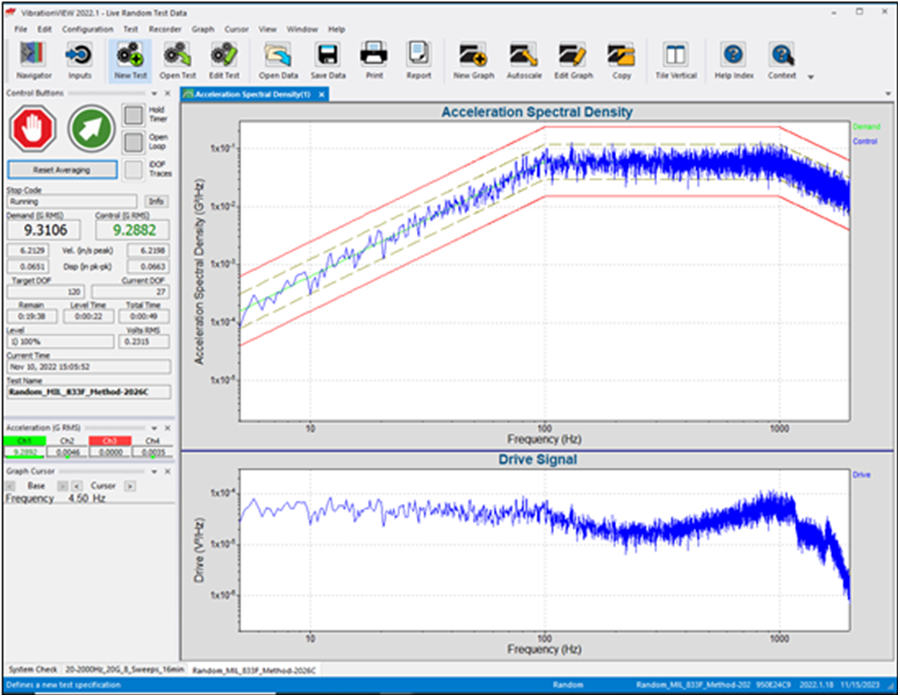SNAA390 july 2023 LMK6C , LMK6D , LMK6H , LMK6P
- 1
- Abstract
- Trademarks
- 1Introduction
- 2Test Standards and Test Setup
- 3Sinusoidal Vibration, Random Vibration, and Mechanical Shock Tests
- 4Comparison of BAW Oscillator Vibration Performance With Crystal Oscillator
- 5Summary
- 6References
3.2.1 Procedure for Random Vibration Test
The MIL-STD-883F method 2026C is followed for the random vibration test profiles and setup. Random vibration represents the true environment in which electronic systems operate. Random vibration contains all of the frequencies simultaneously and hence all product resonances are excited simultaneously, which is worse than exciting product resonances individually (as in sinusoidal vibration testing). Random vibration testing helps to identify failures that cannot be duplicated in a sinusoidal environment.
The EVM board setup is identical to what is shown in Section 3.1.1. However, the profile for random vibration is different. The acceleration spectral density with respect to frequency of vibration is shown in Figure 3-14 using VibrationVIEW®, which is used throughout this test.
 Figure 3-14 VibrationVIEW Software Tool
Setup for Random Vibration
Figure 3-14 VibrationVIEW Software Tool
Setup for Random Vibration